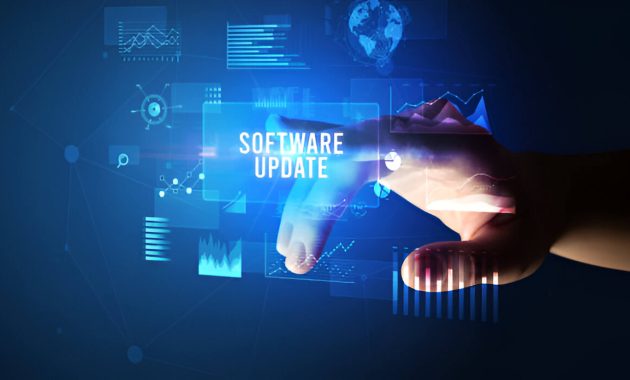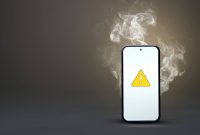A laptop’s black screen can be a perplexing issue for users, often leaving them wondering if their device is beyond repair. This common problem, where the laptop powers on but the display remains dark, can stem from various sources ranging from simple software glitches to complex hardware failures. Understanding the potential causes and solutions for a laptop black screen is crucial for effectively troubleshooting and resolving this frustrating issue, ultimately helping users restore their devices to full functionality.
Understanding the Laptop Black Screen Problem
The laptop black screen problem, often referred to as the “black screen of death,” is a common issue that many users encounter. This frustrating problem occurs when a laptop powers on, but the display remains completely dark. While the causes can vary, it’s essential to understand the potential reasons behind this issue.
One of the primary culprits for a black screen is a faulty display connection. Loose or damaged cables between the motherboard and the screen can result in no display output. In some cases, the issue may lie with the laptop’s graphics card or integrated GPU, which can fail and cause display problems.
Another possibility is a malfunctioning backlight. If the screen is actually on but appears black, shining a flashlight on the display might reveal faint images, indicating a backlight failure. Software-related issues, such as corrupted display drivers or operating system problems, can also lead to a black screen.
It’s important to note that a black screen doesn’t always mean the laptop won’t turn on. The device may be functioning, but unable to display anything. Troubleshooting steps like checking external monitor connections, performing a hard reset, or seeking professional assistance can help diagnose and resolve the issue.
Common Causes of Laptop Black Screen
A black screen on your laptop can be frustrating, but understanding the potential causes can help you troubleshoot effectively. Hardware failure is often a primary culprit, with issues ranging from a malfunctioning LCD panel to a faulty motherboard. Software glitches, such as outdated drivers or incompatible applications, can also trigger a black screen.
Display cable issues are another frequent cause, where loose connections or damaged cables disrupt the signal between the motherboard and screen. Graphics card problems may manifest as a black screen, especially if the card is overheating or failing. Power supply issues, including faulty batteries or adapters, can prevent the laptop from booting properly, resulting in a blank display.
To diagnose the problem, start by checking for external display functionality, listening for startup sounds, and examining power indicators. If basic troubleshooting doesn’t resolve the issue, it’s advisable to consult a professional technician who can accurately identify and address the underlying cause of your laptop’s black screen.
Quick Fixes for Laptop Black Screen
When faced with a laptop black screen, several quick fixes can help resolve the issue. First, try a force restart by holding down the power button for about 10-15 seconds. This can often reset the system and resolve temporary glitches. If that doesn’t work, disconnect all external devices such as USB drives, external monitors, or docking stations, as these can sometimes interfere with the display.
Next, check your power supply. Ensure the battery is properly seated and charged, or that the AC adapter is securely connected. Sometimes, a loose power connection can cause display issues. If your laptop has a removable battery, try removing it, unplugging the power cord, holding the power button for 30 seconds, then reconnecting everything.
Adjusting screen brightness is another simple fix. Use the function keys on your keyboard to increase brightness, as your screen might be set to its lowest setting. Lastly, try booting your laptop in safe mode. This starts your computer with minimal drivers and can help identify if the issue is software-related. If these quick fixes don’t resolve the black screen problem, it may be time to consult a professional technician for further diagnosis and repair.
Diagnosing Hardware
When faced with a black screen on your computer, several hardware components could be the culprit. A faulty LCD screen is often the first suspect, especially if you can hear the system running but see no display. To test this, try connecting an external monitor; if it works, your LCD screen may need replacement.
A loose display cable can also cause a black screen. Carefully open your device and check if the cable connecting the screen to the motherboard is securely attached. Sometimes, simply reseating this cable can resolve the issue.
Graphics card failure is another common cause. If your system has a dedicated GPU, try removing it and using the integrated graphics instead. If the display works, your graphics card may need repair or replacement.
Bad RAM can lead to various issues, including black screens. Try removing and reinserting your RAM modules, or test them one at a time to identify a faulty stick.
Lastly, motherboard problems can result in black screens. Look for signs of physical damage, bulging capacitors, or burnt components. If you suspect motherboard issues, it’s often best to consult a professional technician for diagnosis and repair.
Software
When troubleshooting computer issues, it’s essential to consider software-related causes, which can often be the root of many problems. Driver conflicts are a common culprit, occurring when incompatible or outdated drivers interfere with hardware functionality. Regularly updating drivers can prevent these conflicts and improve system stability.
Windows updates, while crucial for security and performance, can sometimes introduce unexpected issues. In such cases, rolling back recent updates or performing a system restore may resolve the problem. It’s important to maintain a balance between staying current and ensuring system stability.
BIOS issues can also lead to various computer problems. Updating the BIOS to the latest version can fix bugs and improve compatibility with newer hardware and software. However, caution is advised when modifying BIOS settings, as incorrect changes can have severe consequences.
Malware infections are another significant concern, potentially causing system slowdowns, crashes, or data loss. Implementing robust antivirus software and maintaining good cybersecurity practices can help prevent and address these threats.
Operating system corruption can result from various factors, including improper shutdowns, hardware failures, or malware. In severe cases, reinstalling the operating system may be necessary. Regular backups are crucial to safeguard against data loss in such situations.
By systematically addressing these software-related causes, users can often resolve computer issues without resorting to more drastic measures or hardware replacements.
Advanced Troubleshooting Techniques
When standard troubleshooting methods fail to resolve complex computer issues, advanced techniques can often provide solutions. One effective approach is performing a BIOS reset, which can resolve boot-related problems and conflicts between hardware components. For display issues, connecting an external monitor can help determine whether the problem lies with the screen or the graphics card.
Booting from recovery media is another powerful tool, allowing access to system repair options even when the primary operating system fails to load. This method can be particularly useful for addressing software corruption or malware infections.
For persistent hardware issues, systematic component testing can pinpoint faulty parts. This process involves isolating and testing individual components, such as RAM modules or hard drives, to identify the source of system instability.
Lastly, utilizing system restore points can revert your computer to a previous working state, effectively undoing recent changes that may have caused issues. This technique is especially valuable when software installations or updates lead to unexpected problems.
By employing these advanced troubleshooting techniques, users can tackle a wide range of complex computer issues and often avoid the need for professional repair services.
When to Seek Professional Help
While some laptop issues can be resolved through simple troubleshooting, there are instances when it’s crucial to enlist the expertise of professional laptop repair services. If your device is still under warranty, it’s advisable to contact the manufacturer for warranty claims before seeking third-party assistance. However, for out-of-warranty laptops or complex problems, professional help becomes invaluable.
Data recovery is a delicate process that often requires specialized tools and expertise. If you’re dealing with lost or corrupted files, it’s best to consult professionals who can safely retrieve your data without causing further damage. Similarly, component replacement, such as swapping out a faulty motherboard or replacing a damaged screen, typically necessitates technical know-how and specific tools that most users don’t possess.
Professional diagnosis is particularly important when dealing with intermittent issues or problems that aren’t immediately apparent. Trained technicians can perform comprehensive tests to identify underlying hardware or software problems that might elude the average user. By seeking professional help in these situations, you can ensure accurate diagnosis and effective repairs, potentially saving time and preventing further damage to your device.
Preventing Future Laptop Black Screen Issues

Regular maintenance is key to preventing future laptop black screen issues. Start by keeping your software up to date, including the operating system, drivers, and applications. These updates often contain crucial fixes for known problems and security vulnerabilities.
Hardware care is equally important. Ensure proper ventilation by keeping your laptop clean and free from dust. Overheating can lead to various issues, including black screens. Use compressed air to clean vents and fans regularly.
Implementing robust backup strategies can save you from data loss if a black screen occurs. Use cloud storage or external hard drives to keep your important files safe and easily accessible.
Protect your laptop from power surges by using a surge protector. Sudden power fluctuations can damage your laptop’s hardware, potentially causing black screen problems.
By following these preventive measures, you can significantly reduce the risk of encountering black screen issues and extend the lifespan of your laptop.










